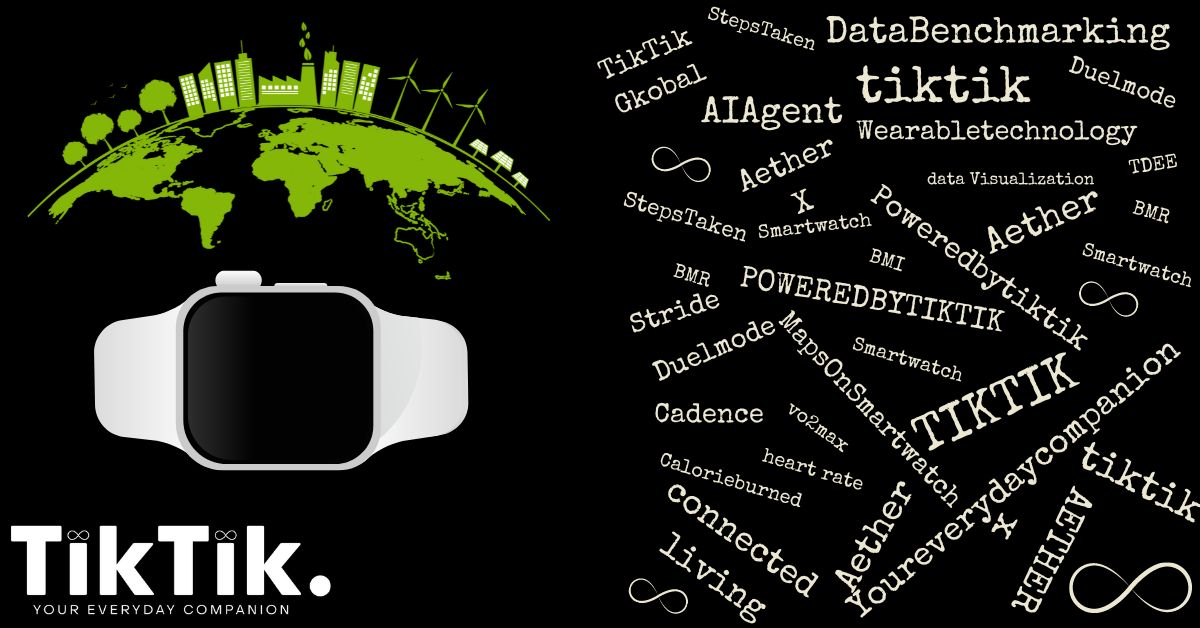
The Environmental Impact of Smartwatches: How Sustainable are They? | TikTik Global
Introduction
In an era where sustainability and environmental consciousness are paramount, it’s crucial to assess the ecological footprint of everyday technology. Smartwatches, hailed for their convenience and connectivity, have become ubiquitous gadgets in modern society. However, as the demand for these devices continues to rise, questions arise regarding their environmental impact. In this article, we’ll explore the environmental impact of smartwatches, with a focus on TikTik Global’s Aether X, and delve into the efforts made to mitigate their environmental footprint.
1. The Rise of Smartwatches
- Smartwatches have witnessed a meteoric rise in popularity, offering users a myriad of features and functionalities.
- As consumers increasingly rely on smartwatches for communication, fitness tracking, and productivity, the demand for these devices has surged.
2. Environmental Concerns
- The manufacturing process of smartwatches involves the extraction of raw materials, energy-intensive production methods, and transportation logistics, all of which contribute to carbon emissions and environmental degradation.
- Additionally, the disposal of electronic waste poses significant challenges, as outdated or malfunctioning devices end up in landfills, leaching harmful chemicals into the soil and water.
3. Sustainable Practices in Manufacturing
- To address these concerns, companies like TikTik Global have begun implementing sustainable practices in the manufacturing of smartwatches.
- This includes sourcing materials from responsibly managed forests, reducing energy consumption during production, and utilizing recyclable packaging materials.
- TikTik Global’s commitment to sustainability is evident in the Aether X, which incorporates recycled materials and energy-efficient components to minimize its environmental impact.
4. Extended Product Lifespan
- Another key aspect of sustainability in smartwatches is the extension of product lifespan through software updates and repairability.
- By providing regular software updates and offering repair services, manufacturers can prolong the usability of smartwatches, reducing the need for frequent replacements and minimising electronic waste.
5. Responsible End-of-Life Management
- Proper disposal and recycling of smartwatches at the end of their lifespan are essential for minimising environmental harm.
- Companies like TikTik Global have implemented take-back programs and recycling initiatives to ensure that old devices are recycled responsibly and kept out of landfills.
6. Consumer Awareness and Education
- Ultimately, promoting consumer awareness and education is crucial in fostering sustainable consumption habits.
- By educating consumers about the environmental impact of smartwatches and encouraging responsible usage and disposal practices, companies can empower individuals to make informed choices that benefit the planet.
7. Certificates Precured By TikTik Global After Rigorous Testing
- CE Certificate:
The CE marking is a symbol of compliance with European Union (EU) regulations, ensuring that products meet health, safety, and environmental protection standards. It is mandatory for products sold within the European Economic Area (EEA), indicating conformity with applicable directives such as the Machinery Directive, Medical Devices Directive, and Electromagnetic Compatibility Directive. The CE certificate signifies that a product has undergone rigorous testing and assessment to meet the strict requirements set forth by EU legislation, assuring consumers of its safety and quality. Additionally, the CE marking facilitates the free movement of goods within the EEA, streamlining trade and promoting economic growth.
- RoHS (Restriction of Hazardous Substances):
The RoHS directive aims to reduce the environmental impact of electrical and electronic equipment (EEE) by restricting the use of hazardous substances. It prohibits the use of six substances—lead, mercury, cadmium, hexavalent chromium, polybrominated biphenyls (PBBs), and polybrominated diphenyl ethers (PBDEs)—in EEE products. Compliance with RoHS regulations ensures that products are free from harmful substances that can pose risks to human health and the environment. By adhering to RoHS standards, manufacturers demonstrate their commitment to environmental stewardship and sustainable manufacturing practices, contributing to a cleaner and safer planet.
- ISO (International Organization for Standardization):
ISO is a globally recognized standard-setting body that develops and publishes voluntary consensus standards for various industries. ISO certifications, such as ISO 9001 for quality management systems and ISO 14001 for environmental management systems, provide organizations with frameworks for establishing and maintaining effective management systems. These certifications demonstrate a company’s dedication to meeting customer requirements, improving operational efficiency, and reducing environmental impact. By implementing ISO standards, organizations can enhance their competitiveness, build trust with stakeholders, and achieve sustainable business growth
Conclusion
In conclusion, while smartwatches offer undeniable convenience and functionality, their environmental impact cannot be overlooked. However, with companies like TikTik Global leading the way in sustainable practices and responsible manufacturing, there is hope for a greener future. By prioritizing sustainable materials, extending product lifespan, and promoting consumer awareness, we minimize their ecological footprint and contribute to a more sustainable tech industry. As consumers, it’s essential to consider the environmental implications of our purchasing decisions and support companies that prioritize sustainability in their products and practices.















